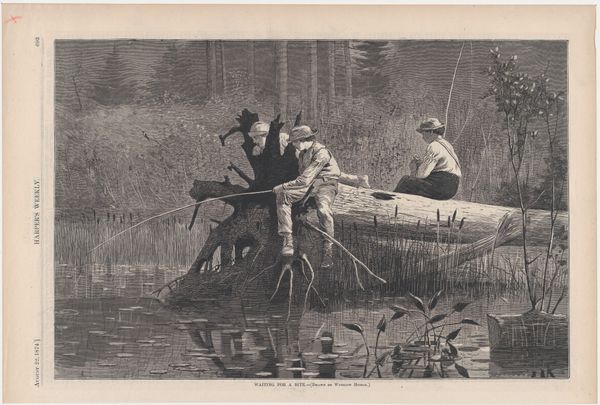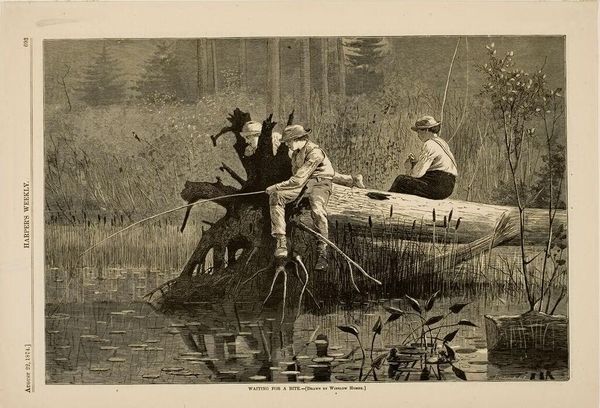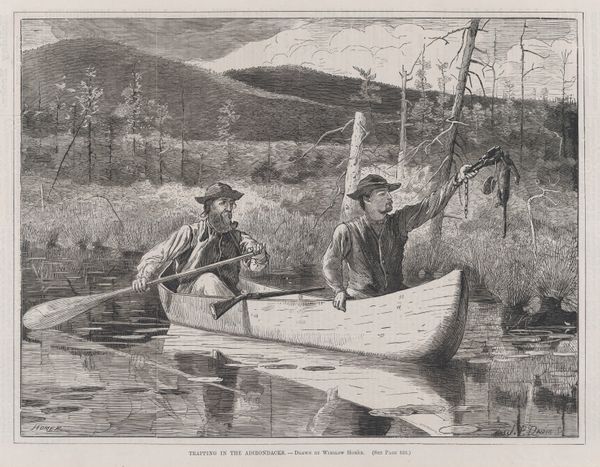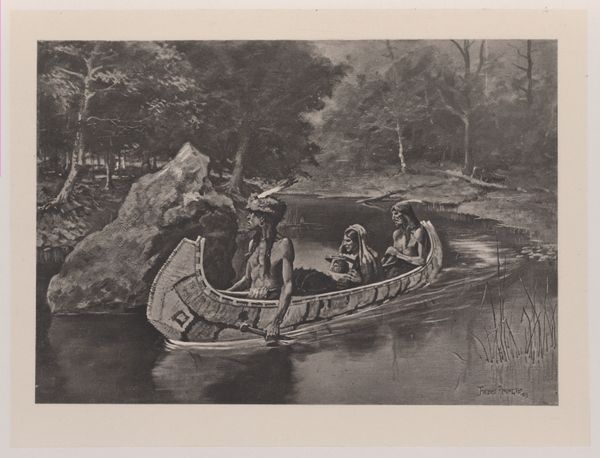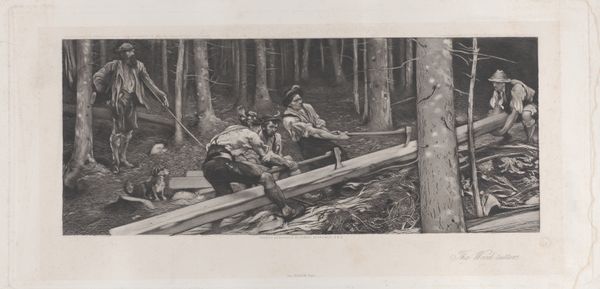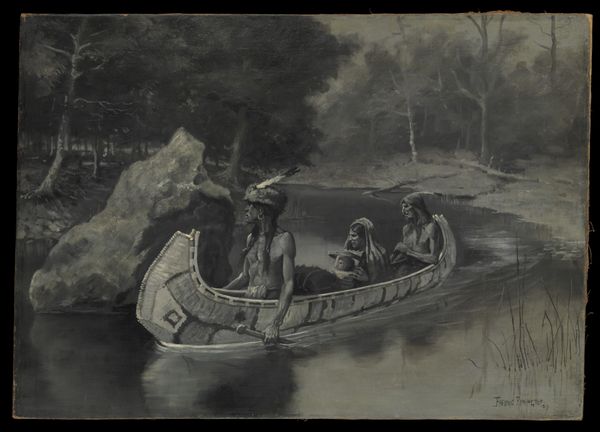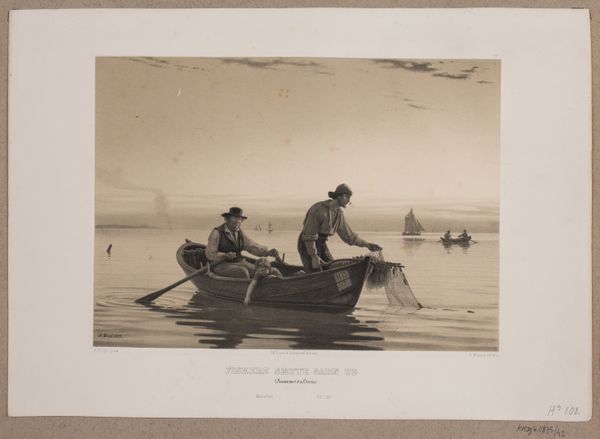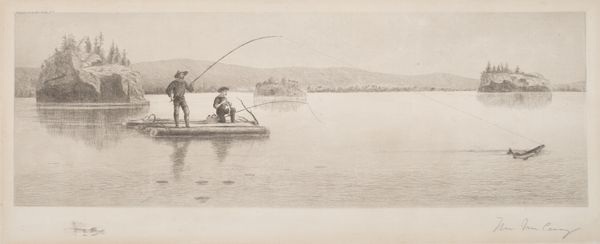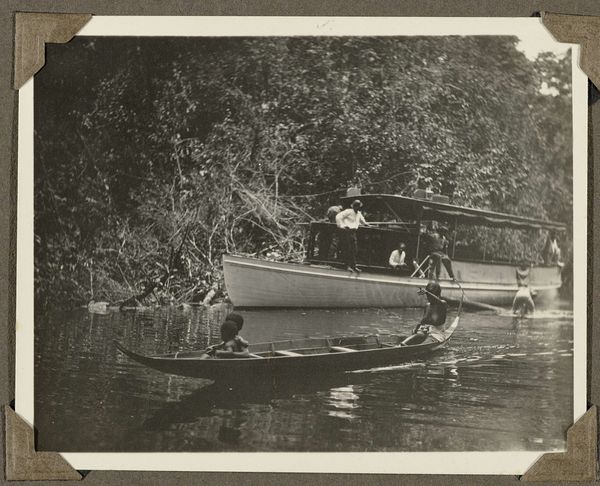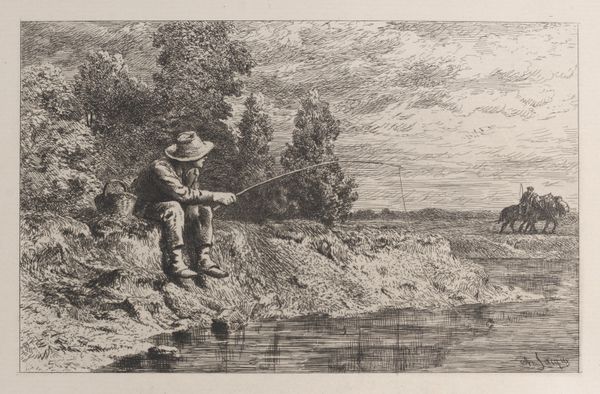
print, woodcut, wood-engraving, engraving
# print
#
impressionism
#
landscape
#
woodcut
#
19th century
#
united-states
#
genre-painting
#
wood-engraving
#
engraving
#
watercolor
Dimensions: 9 1/16 x 13 3/4 in. (23.0 x 34.9 cm)
Copyright: Public Domain
Editor: This is Winslow Homer's "Waiting for a Bite," a wood engraving from 1874. It's got this stillness to it, this quiet observation of a leisurely pastime, fishing, of course. I'm immediately drawn to the reflections in the water – it makes the scene feel twice as deep. What strikes you when you look at this piece? Curator: Ah, Winslow. The quintessential American storyteller! What catches my eye? Beyond the tranquility, which you've keenly observed, is a kind of deliberate ambiguity. Look at the light – where does it seem to originate? Homer, through his woodcut, masterfully uses light and shadow to heighten the sense of waiting, almost as if time itself is suspended with the fishing lines. He invites us to participate in the anticipation, doesn't he? Editor: That's an interesting perspective. I hadn't considered the light. Is that blurring of light also contributing to the slightly unsettled feeling? It’s picturesque, but there's also something else there, just under the surface. Curator: Exactly! Think of this within its context, a nation recovering from civil war, seeking simple pleasures yet shadowed by deeper societal issues. Homer subtly folds these complexities into what appears, at first glance, to be a simple genre scene. The “bite” isn’t just about catching a fish, is it? Could it symbolize something else—hope, perhaps, or a return to normalcy after turmoil? What do you reckon? Editor: I see what you mean. Now, thinking about that post-war context, this could be read as a subtle comment on patience and resilience, which are probably necessary virtues when rebuilding. It gives new weight to the mundane act of fishing. Curator: Precisely! Homer was, in many ways, the bard of his era. He understood that the quiet moments often speak loudest. I keep coming back to those two boys—they seem almost detached from one another. What do you read from their relationship? Editor: That detail adds yet another layer. Maybe they represent different aspects of the post-war American experience—one engaged, one contemplative. Thanks; I'm viewing Homer completely differently now. Curator: My pleasure! It’s so rewarding to see the sparks ignite. Remember, art, like life, is always more rewarding when observed and felt from multiple angles.
Comments
No comments
Be the first to comment and join the conversation on the ultimate creative platform.
